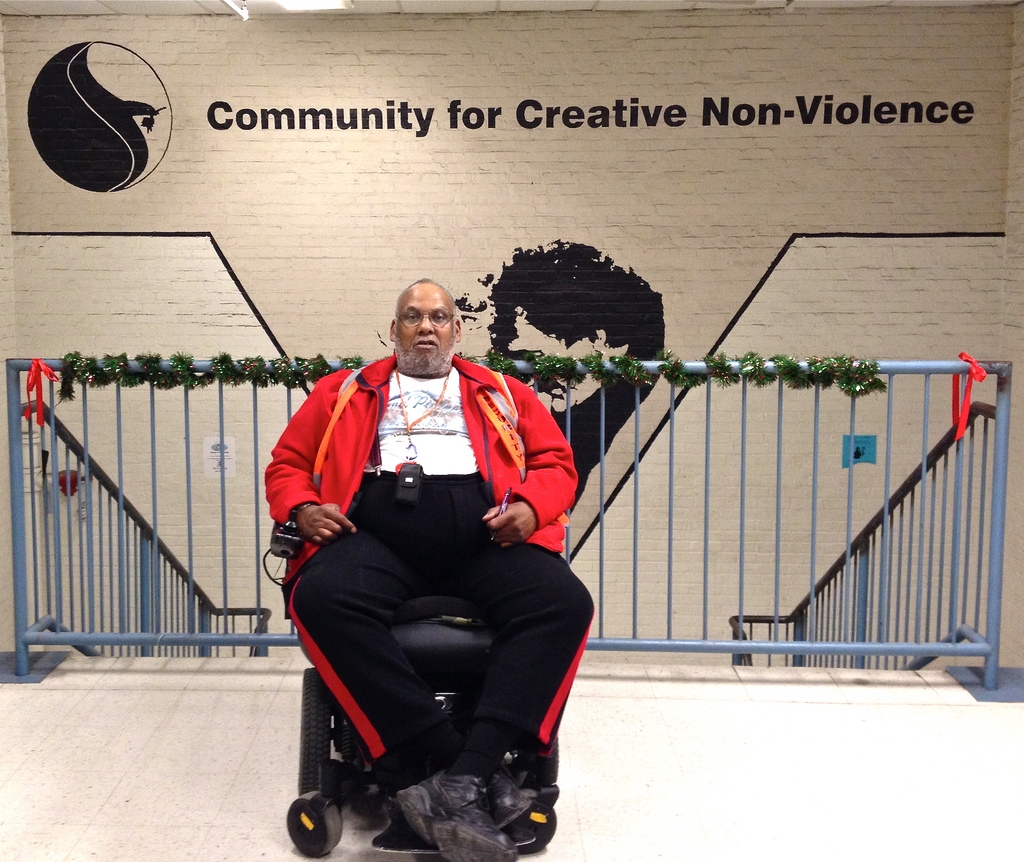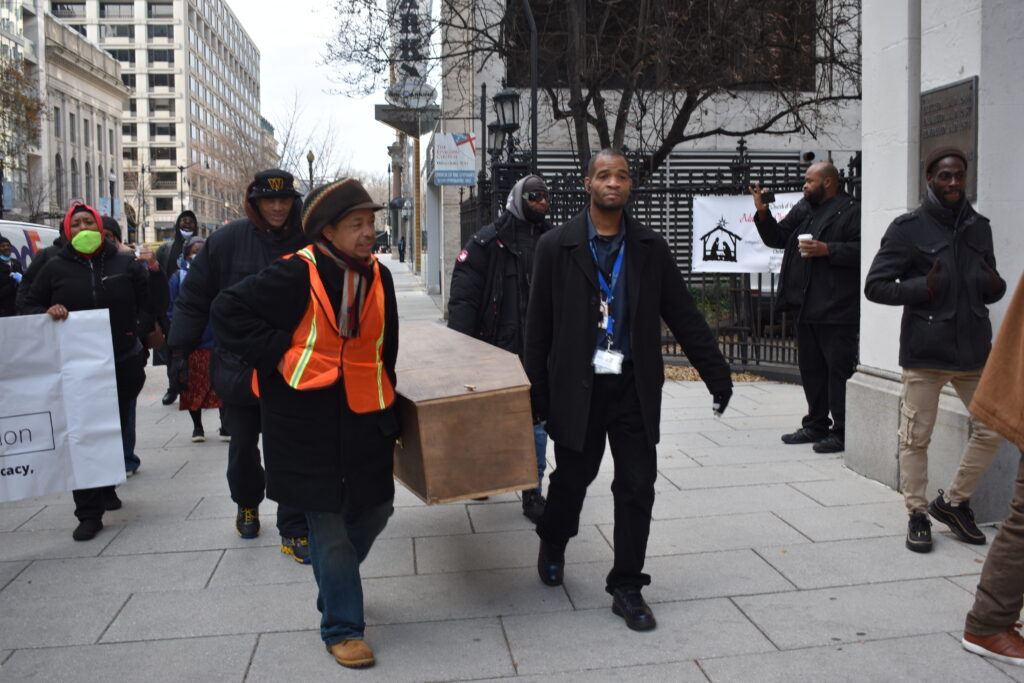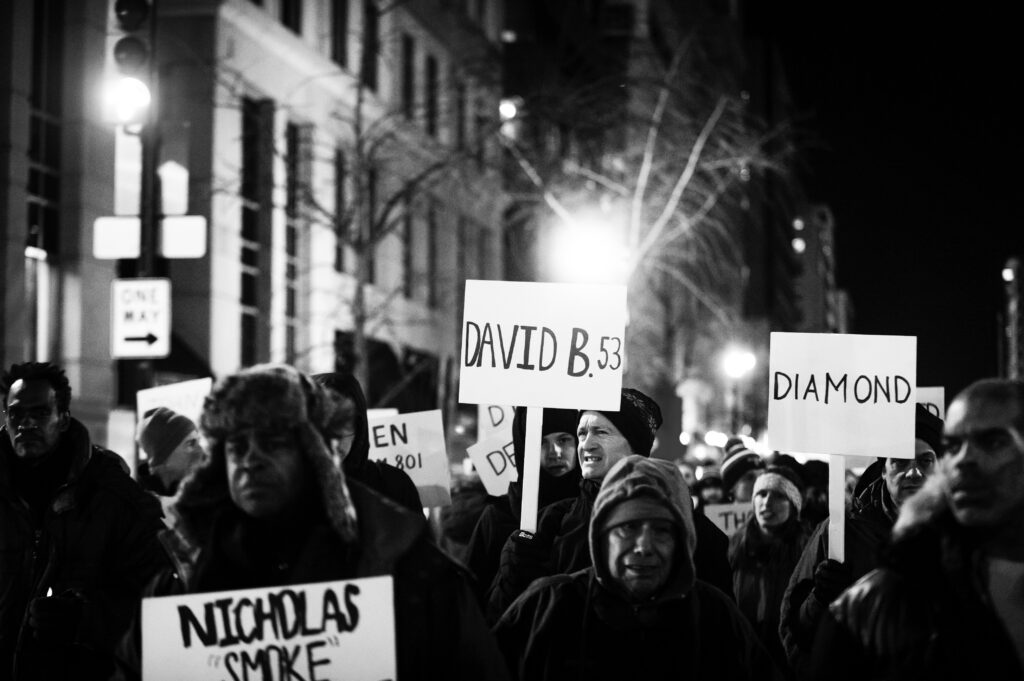Clarence Walker wears an orange security vest. He uses a wheelchair to lead the way through the complex system of corridors that run inside the cavernous Federal City Shelter.
The shelter, located on 3rd Street NW, is often simply called CCNV, for Community for Creative Non-Violence. That is the name of the group led by the famous homeless activist Mitch Snyder, who staged hunger strikes and demonstrations until President Ronald Reagan turned over the building for use as a shelter back in the 1980s.
The place has been filled with hundreds of cots ever since.
Walker, who now chairs CCNV’s board of directors, started working here in 1988. He knows this place very well.
Walker boards the elevator to the third floor, then leads the way to the common room, also known as the staffers’ lounge.
The common room has a pool table, a soda machine, and tables with chairs. At first, there seems to be nothing unusual about this room where homeless residents and staffers can relax and socialize. Then next to the pool table, you see the two cabinets, or bookshelves, containing transparent boxes.
The boxes are filled with something white that looks like sand or small stones. They are actually urns. They contain the ashes of people who died in homelessness.
Jerry Jones knows many of their stories.
Jones was a resident and a staffer at CCNV from 1988 to 1990. One of his assignments was to collect the cremated ashes of homeless people when no one else would claim them.
“The body was sent from the medical examiner’s office to a funeral home. CCNV would receive the cremated remains in a cardboard box. I would assemble the plastic urns, nameplates were made to identify each person who had died, and I would transfer the ashes from the cardboard box into the plastic urn. My responsibility was to make the urns out of plexiglass,” remembers Jones, who is now executive director of the National Coalition for the Homeless (NCH).
“Each year the number of urns increased,” Jones explains with his calm voice.
The urns that are made of plexiglass were from Snyder’s time. CCNV kept the urns of homeless people before the CCNV moved to the Federal City Shelter Building.
Some of the ashes were collected by CCNV even before Jones started working with the group. Until 1988 the urns were kept at a CCNV house in Columbia Heights. The ashes were moved to CCNV when the whole community relocated to the shelter.
In the early years, CCNV would cover the cost of the cremation. but the organization no longer has the funds to do that, Walker said. The living have more urgent needs, he says. Everything, from tissues to mops, costs money. The cost of cremating 10 people would amount to approximately $25 000, Walker said.
If no one claims the body of an indigent person, the District is responsible for the remains. The city cremates the body and buries the ashes in a group interment at a local cemetery. But Jones said CCNV didn’t want homeless people to have an anonymous burial.
The NCH is now talking about ways to revive the tradition of the urns for homeless people. “It’s important that people can get a dignified resting place. We need to remind people of the fact that people die on the streets. Dozens of people across the country have lost their lives in just the last 10 days, because of the cold snap that began earlier this month. Together with the national memorial day for homeless persons, CCNV’s urns are a really important reminder,” Jones said.
When he worked as a security director at CCNV, Walker used money left behind by two of the dead to buy urns for their remains. One of the departed was Gregory P. Shea, a man he had known for 15 years and who died in 2008. Shea was homeless and had also more than 22 years of service at CCNV.
Walker is not shy when he shows the clearly visible cremated ashes in the cabinets. When asked how many urns are placed in the two cabinets, he invites a visitor to count them. There are 39 urns. Most of them hold the remains of men, but a few bear the names of women. One if them is labeled Jane Doe. He carefully takes the transparent box out of the cabinet.
Walker, in his kind and gentle way, makes the ashes less mysterious. The ashes in each urn seem now like human presences, just in another form of consistency. They are light and odorless. It seems important that they are there.
Walked believes in the cremation process, in keeping the urns around.
“I think it’s a clean and safe way. Why put all that money in the ground?”
“The urns symbolize CCNV. Even in death, CCNV provides service. There might be friends of the dead persons who don’t want the urns. But CCNV does. They care for you”.
Walker’s serious face lights up.
“We shoot pool, we eat, and at 5 o’clock we’ll have cigarettes together right over there. The homeless people are here with us,” he says, and looks to the urns.
“As long as CCNV exists, they’ll be here.”








